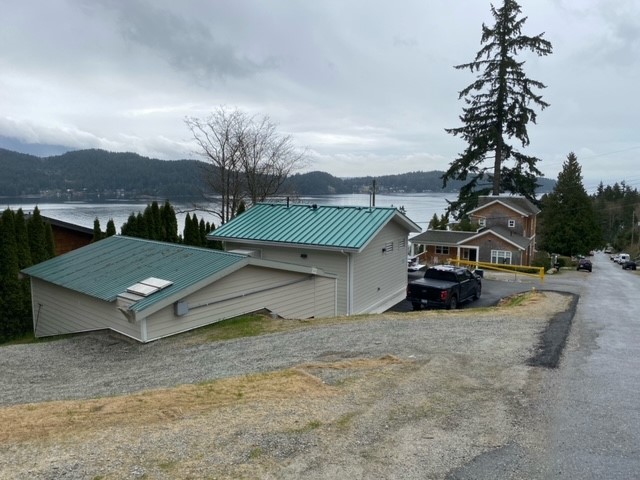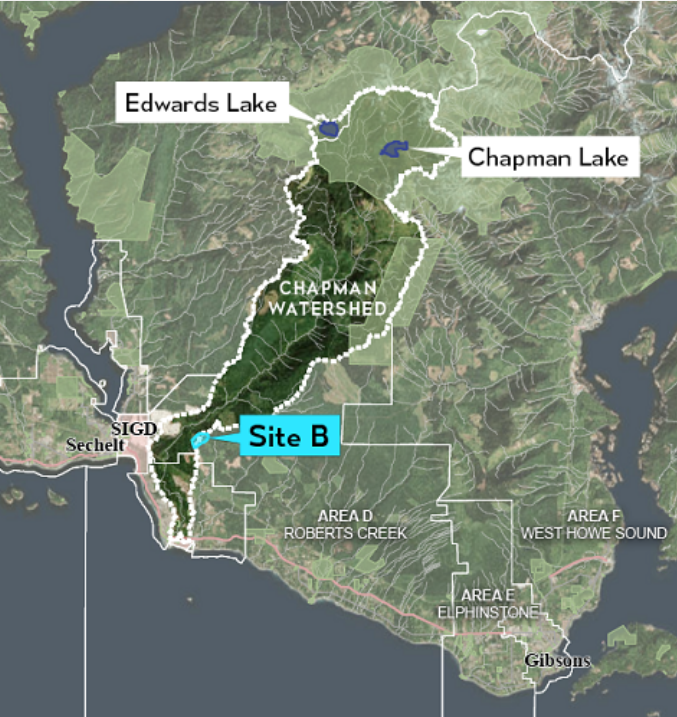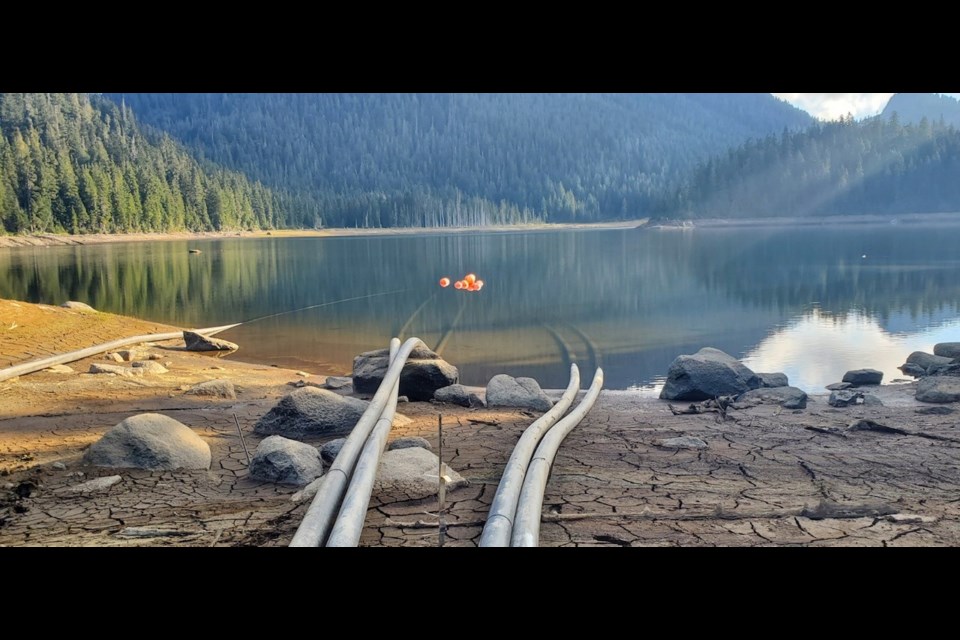On March 31, with a month to go before the mandatory first stage of water restrictions come into effect on May 1, the Sunshine Coast Regional District is providing a work plan for sourcing water.
Last month, the SCRD got started by issuing letters to the 515 metered households that used the most water last summer — by hundreds of thousands of litres of water each month, in some cases. By comparison, households are asked to stay below 300 litres per day during Stage 4, or around 9,000 litres per month, staff told Coast Reporter. Those households were notified they will immediately need to plan to reduce their use this summer.
The four-page document outlines the SCRD’s expectation that the summer season ahead will be similar to the two previous record-breaking years that saw extended droughts. In 2022, the Coast went more than 100 days without rain, triggering not one but two states of local emergency, and water use restrictions that lasted for nine months. That came on the heels of 2021, when Stage 4 restrictions began on August 10, the earliest it had ever been called.
Now, the SCRD’s press release shares the projects the local government is working on in the short and long-term.

Church Road online by June
Staff have two priorities for the Church Road well field project, which broke ground in March 2022 but faced supply chain-related delays and increasing costs: supply and the water licence. Initially, Church Road will provide roughly three million litres of water per day with the pumps currently in place. The potential supply is estimated to be up to 4.6 million litres per day, down from the initial projections of 5 million litres daily. The SCRD is planning to install larger pumps by June in order to draw more water.
“Even if the larger pumps cannot be installed in the coming weeks, this well field is anticipated to be online and available for use by June,” the release states.
As for the water licence, while a conditional water licence is currently issued to the SCRD, it comes with requirements that must be met before the final water licence can be issued. In the next month, the SCRD’s consultant will provide the province with information about Soames Creek’s flow and fish habitat. A meeting has been scheduled with the provincial government to make sure it is satisfied with that data, so the water licence may be issued by June 1.
A new and an old treatment plant
Staff are exploring how to make Gray Creek a more reliable water source. Gray Creek can provide roughly one million litres of water per day in the summer months — unless it is raining. Precipitation causes turbidity, when particles from the creek bed mix into the water and requires treatment. One idea is to install a portable treatment plant at Gray Creek. Once staff have a cost estimate, they will bring a report forward to the board, communications manager Aidan Buckley said.
The Chapman water treatment plant is also in need of upgrades to be operational. Last year, that plant came close to shutting down several times when there was not enough water running through it. “Thanks to the incredible work and creative thinking of SCRD staff, the plant continued functioning throughout the drought period,” the release said. Thinking forward to this year, staff will install pumps to keep the treatment plant operational on less water, reducing the need for plant shutdowns.
The release says staff will also recalibrate the monitoring equipment that tracks water through the treatment plant, providing important data that can be used for water conservation regulation decisions.
Siphons from 2022 are still in place at Chapman Lake, and can be operated in case of an emergency during Stage 4.
Collaborating with neighbours
The Town of Gibsons has provided water to the SCRD’s Chapman system on an emergency basis for the past two summers, as well as in previous years. Now, the two governments are working together to have Gibsons supply water to the SCRD’s system earlier in the season. Doing so would keep more water in the Chapman and Edwards lakes.
The SCRD’s focus will be on “retaining as much water as possible in our main water sources, Chapman and Edwards Lakes for community use through late summer and early fall,” the release said. In this effort, the SCRD has applied to the province for permission to reduce the required environmental flow needs (EFN) from Chapman Lake. EFNs ensure fish habitat and ecosystems are maintained with enough water.
But Stage 4, the most severe level of water restrictions, “will be in place at some point this summer” if there is a significant drought. Such water conservation efforts ensure there is water for community use, health and for fire suppression and response efforts through the summer and into the fall. the release states.
Long-term plans
While those short-term initiatives are underway, the SCRD has a number of long-term projects in the works.
The contract for the last phase of installing water meters, in Sechelt, will be awarded in the coming weeks, after which installation timelines will be determined. In the meantime, the SCRD is waiting for information on a $6 million grant application for that project.

A potential water reservoir known as Site B above the Sechelt Airport will be analyzed, including geotechnical drilling, through April. That 45-hectare portion of Crown Land came before the board in November 2019. At the time, it was reported an engineered lake at Site B would be the largest and most expensive infrastructure project the SCRD has taken on at $53 million — if it’s approved. It was estimated in the 2019 report that such a project could hold about 1.27 million cubic metres or about a month of water supply for the community at Stage 2. The SCRD’s website states the viability, updated cost estimates and a preliminary design will be presented to the board in Q1 (which ends March 31) or Q2 of 2023.
At the Langdale well field, two production-sized test wells have been tested and the SCRD is waiting on the results of the water quality and supply, though results have “appeared favourable so far,” the release said. Next, a report will be presented to the SCRD board with a design of a pump house. Then, staff will begin the water licence applications.
A broad plan of action will be discussed at the next water summit in May, a series of meetings that aim to “advance the most impactful, efficient, and sustainable water projects.”
The SCRD will also continue to offer rainwater harvesting rebates to people who wish to install such a system on their properties. In 2023, more than $19,000 worth of rebates have been pre-approved.
More reports coming
The next SCRD committee of the whole meeting will include a water supply update from staff, as well as reports on water projects and different scenarios. That meeting is scheduled for April 6.
With files from Connie Jordison and Sophie Woodrooffe



